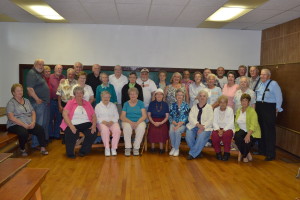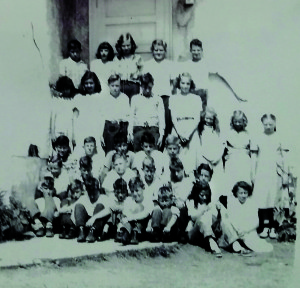The Year is…1899
A Spurned Love Affair Turns Deadly
by James Rada, Jr.
On April 22, 1899, 16-year-old Orpha Harshman of Wolfsville started off on a two-mile walk to her sister’s house. She took a shortcut across a field that would cut the journey in half.
Her stepbrother, Edward Morgan, 25, watched and followed. He caught up to her on a mountain ridge out of sight of any houses.
Although there were no witnesses to what happened next, the Emmitsburg Chronicle presented this version of events:
“As she arrived at the rocks, Morgan sprang out and called upon her to offer up her last prayer, as her time had come. He, at the same time, thrust a revolver in her face. She begged him to spare her life, but to no purpose. It is said that, finding her pleadings were fruitless, she summoned all her courage and attempted to strike the weapon from his hand, when he quickly placed it to her temple and fired, the bullet entering the right side of the head and passing out on the left. In attempting to ward off the weapon, the sleeve of her dress took fire from the powder and was burned off, as well as a portion of the dress over her bosom, under which her arm lay where she fell. Her arm was badly burned, and her bosom seared from the fire.
“Feeling satisfied he had killed her, Morgan then placed the revolver to his own head and attempted to send a bullet into his brain, but the leaden missile struck the right cheekbone, and glancing came out of his eye. He then fired a bullet into his left leg. Finding these two ineffectual, he placed the barrel of the revolver against his abdomen and emptied the two remaining chambers into his bowels and fell over by the side of his innocent victim.”
Peter Baer lived nearby. He heard the pistol shots and a scream. More shots, in quick succession, followed a few minutes later, but Baer paid them no mind, according to the Catoctin Clarion.
Charles Kline was driving his mother home in a buggy when he heard the shots. He drove toward the shots and found Morgan’s and Harshman’s bodies lying in pools of blood. The sight upset Kline so much that he didn’t recognize the bodies. He thought they were tramps.
Kline drove his buggy to Scott Martin’s house and told Martin to get a doctor. Kline then drove back to the bodies with some other people who were at Martin’s house.
They examined the bodies, and surprisingly, found them both alive. However, Harshman died a short time later. Morgan’s body was loaded onto a wagon and taken to his home. The doctor could do nothing, and Morgan died five hours later.
The story soon came out that Morgan had been obsessed with his stepsister (Morgan’s father married Harshman’s mother).
“The family had been living happily and contented until about six months ago, when Mrs. Morgan observed her husband’s son was paying what she considered too much attention to her daughter,” the Emmitsburg Chronicle reported. “The more she resisted, the stronger became his attachment for her.”
Morgan became so desperate that he asked Harshman to elope with him. She refused him and said if he didn’t leave her alone, she would leave home.
“Seeing she was determined in her purpose, he told her that unless she married him, she would never live to be the bride of another,” according to the Chronicle.
Instead, Morgan’s father told him he needed to move out. Morgan did, but he stayed in a building near his family home. He also spent a lot of time in Hagerstown getting drunk, and a week before the murder-suicide, he purchased the pistol he would use to kill Harshman and himself.
Both Harshman and Morgan were buried in separate cemeteries. Harshman was buried in the Grossnickle Dunkard Church cemetery and Morgan in the Wolfsville Reformed Church cemetery.
Even in death, Morgan still could not be near Harshman.

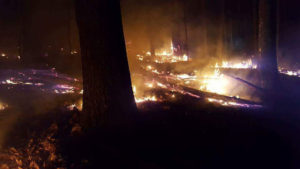
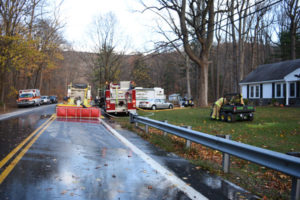
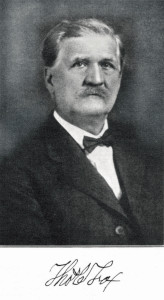 Foxville: It was a Fox (Fuchs). George Fuchs moved to Frederick County, Maryland, when he was a young man. He bought a tract of timber land, located in what is now known as Hauver’s District, named it “Foxes Ranges,” and afterward, Foxville. He cleared part of his land and erected buildings. Then, he opened a store. He purchased more large tracts of land, on which he farmed and felled timber. He attended Apples Church in Mechanicstown (Thurmont), where records show some of his children were baptized. He donated land for the first Mt. Moriah Lutheran Church in Foxville in 1830, the congregation having been formed in 1829.
Foxville: It was a Fox (Fuchs). George Fuchs moved to Frederick County, Maryland, when he was a young man. He bought a tract of timber land, located in what is now known as Hauver’s District, named it “Foxes Ranges,” and afterward, Foxville. He cleared part of his land and erected buildings. Then, he opened a store. He purchased more large tracts of land, on which he farmed and felled timber. He attended Apples Church in Mechanicstown (Thurmont), where records show some of his children were baptized. He donated land for the first Mt. Moriah Lutheran Church in Foxville in 1830, the congregation having been formed in 1829.